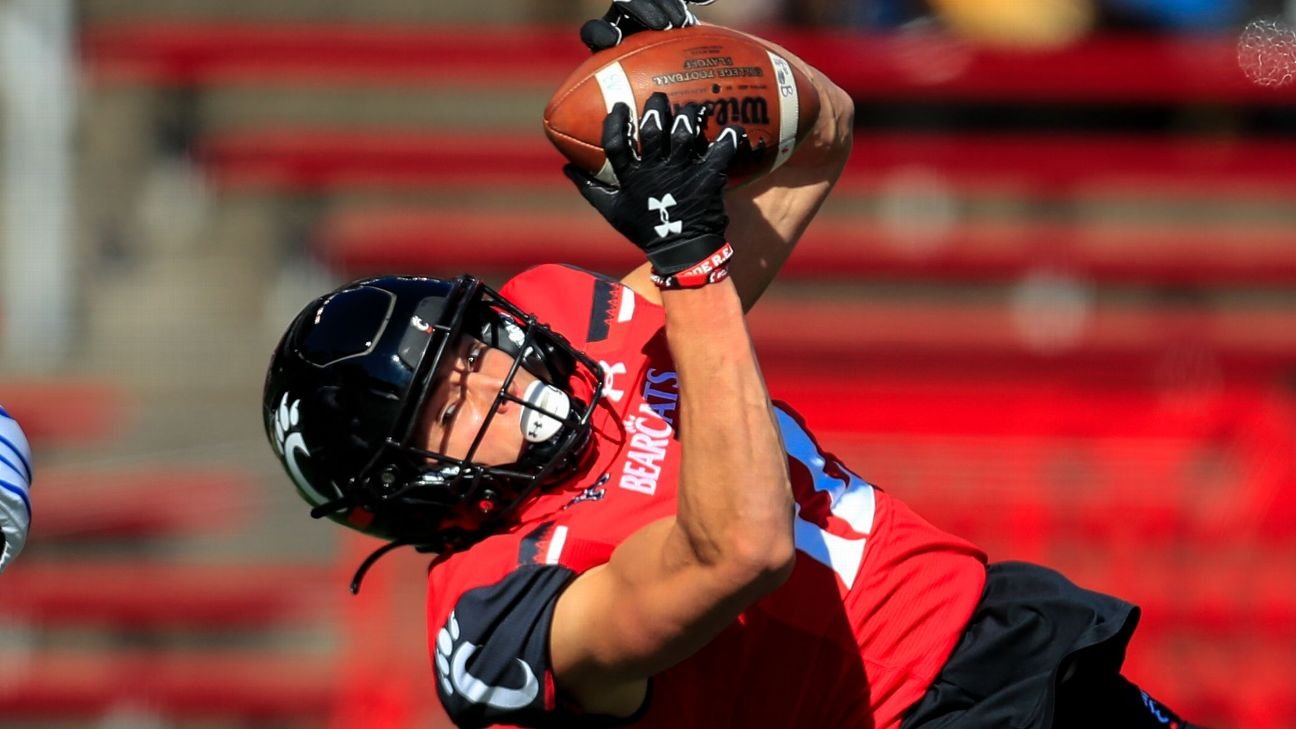Sports
Unsuccessful draft pick Crossword Clue
Published
1 year agoon
By
Jack
In the world of sports, the process of drafting players is a crucial step towards building a successful team. However, the journey is not always smooth, and there are various pitfalls that teams can encounter when they make an unsuccessful draft pick. Understanding the importance of a successful draft pick is fundamental to avoiding these pitfalls.
Table of Contents
ToggleUnderstanding the Importance of a Successful Draft Pick
When it comes to team building, draft picks play a significant role. These picks are the foundation upon which teams construct their future success. In professional sports, the selection of talented players through the draft can shape a team’s fortunes for years to come.
The impact of draft picks on team performance cannot be overstated. A successful pick can provide immediate contributions, leading to improved results and increased chances of postseason success. Conversely, an unsuccessful pick can have detrimental effects that are felt both on and off the field.
The Role of Draft Picks in Team Building
Draft picks are the lifeblood of a team’s roster. They offer the opportunity to inject fresh talent, energy, and enthusiasm into a team. By carefully selecting players who fit the team’s style of play, coaches and general managers can create a cohesive and competitive unit capable of achieving greatness.

When a team makes a successful draft pick, it not only adds a skilled player to the roster but also brings a sense of hope and excitement to the entire organization. The fans eagerly anticipate the debut of the new player, wondering how they will contribute to the team’s success. The media buzzes with speculation and analysis, dissecting the potential impact of the pick. The draft pick becomes a symbol of the team’s future, a beacon of promise that ignites the imagination of fans and instills a renewed sense of optimism.
The Impact of Draft Picks on Team Performance
Successful draft picks can have a transformative effect on team performance. They provide teams with key contributors who possess the skills and abilities needed to excel in their respective sports. These players can become the cornerstones of a franchise, elevating the team to new heights and thrilling fans with their exceptional performances.
Take, for example, the story of a small-market basketball team that made a shrewd draft pick. They selected a relatively unknown player who had displayed immense potential but was overlooked by many other teams. This player turned out to be a game-changer, exceeding all expectations and leading the team to multiple championships. The impact of this draft pick went beyond the on-court success; it revitalized the entire franchise, attracting new fans, boosting ticket sales, and generating a renewed sense of pride in the community.
On the other hand, an unsuccessful draft pick can hinder a team’s progress and stifle its growth. A player who fails to meet expectations or lacks the necessary skills can become a liability on the field, hampering the team’s chances of success. This can manifest in poor on-field performance, missed opportunities, and a decline in overall team morale.
Furthermore, an unsuccessful draft pick can have long-lasting consequences for the team’s future. It can lead to a wasted investment of resources and hinder the team’s ability to attract top-tier talent in the future. The negative impact of an unsuccessful pick can linger for years, forcing the team to rebuild and reevaluate its strategies.
The Consequences of an Unsuccessful Draft Pick
When a team makes an unsuccessful draft pick, there are several consequences that can arise. These consequences extend beyond the immediate impact on the team’s performance and can have long-term implications that reverberate throughout the organization.
Let’s delve deeper into the consequences of an unsuccessful draft pick and explore the financial implications it can have for a team. Teams invest a substantial amount of money in draft picks, including signing bonuses, contracts, and other financial commitments. When a player fails to pan out, it represents a significant waste of resources and can strain the team’s financial flexibility.
But that’s not all. Unsuccessful draft picks can also lead teams to make costly decisions to fill the gaps left by their underperforming players. This can involve signing expensive free agents or making trades that further deplete the team’s resources. Such financial burdens can hinder a team’s ability to compete effectively and may hinder long-term success.
Now, let’s shift our focus to another critical aspect affected by an unsuccessful draft pick – team morale and cohesion. Team morale and cohesion are crucial components of any successful team. When an unsuccessful draft pick fails to contribute to the team’s success, it can create a sense of disappointment and frustration among the players.
This negativity can permeate the locker room and affect team dynamics, leading to a decrease in unity and collective motivation. Imagine the impact on a team’s morale when they see a highly-touted draft pick struggle to find their footing on the field. It can be demoralizing for the entire team, as they witness the gap between expectations and reality widen.
Moreover, unsuccessful draft picks can give rise to internal conflicts and disagreements within the organization. Coaches, front office staff, and players may have differing opinions on the reasons for the pick’s failure, causing tension and further eroding team chemistry. The blame game begins, with fingers pointing in various directions, as everyone tries to understand what went wrong and who is responsible.
These internal divisions can cripple a team and hinder its ability to achieve its goals. The once-united front becomes fragmented, with trust eroded and communication strained. It becomes challenging to build a winning culture when there are doubts and uncertainties lingering within the organization.
In conclusion, an unsuccessful draft pick can have far-reaching consequences for a team. It not only impacts the team’s financial situation but also affects team morale, cohesion, and overall organizational dynamics. The repercussions can be long-lasting, making it crucial for teams to carefully evaluate and select their draft picks to avoid these potential pitfalls.
Factors Contributing to Unsuccessful Draft Picks
Understanding the factors that contribute to unsuccessful draft picks is essential in avoiding these pitfalls. By identifying and addressing these factors, teams can improve their draft strategies and increase their chances of success
Overlooking Player Potential and Skill
One common factor leading to unsuccessful draft picks is the failure to accurately assess a player’s potential and skill level. Sometimes, teams focus too heavily on physical attributes or college statistics without fully considering a player’s ability to translate those skills to the professional level. Overlooking a player’s true potential can result in a catastrophic draft selection.
Misjudging Player Compatibility with Team Dynamics
Team dynamics and culture play a significant role in a player’s success. Failure to consider how a player will fit into the team’s existing structure and style of play can lead to compatibility issues. Even if a player possesses immense talent, if they are unable to mesh with their teammates and coaching staff, their performance can suffer, ultimately leading to an unsuccessful draft pick.
Mitigating the Risks of Unsuccessful Draft Picks
While the risks associated with unsuccessful draft picks are evident, there are steps teams can take to mitigate these risks and improve their chances of making successful picks.
Importance of Comprehensive Player Evaluation
A comprehensive player evaluation process is crucial in reducing the likelihood of an unsuccessful draft pick. This evaluation should consider not only a player’s on-field abilities but also their character, work ethic, and willingness to adapt and improve. By conducting thorough research and analysis, teams can make more informed decisions and avoid costly mistakes.
The Role of Effective Scouting and Recruitment
Effective scouting and recruitment are integral to successful draft picks. Skilled scouts can identify hidden talents and future stars who may be overlooked by others. By having a robust scouting system in place, teams can broaden their pool of potential draft picks and increase their chances of finding a gem that will contribute to their future success.
The Long-Term Impact of Unsuccessful Draft Picks
The consequences of an unsuccessful draft pick extend beyond the immediate aftermath. They can have a lasting impact on a team’s reputation, fan support, and future development and success.
Influence on Team Reputation and Fan Support
Unsuccessful draft picks can tarnish a team’s reputation and erode fan support. When fans witness poor draft selections year after year, they may become disillusioned and lose faith in the team’s ability to make sound decisions. This can lead to declining attendance, decreased merchandise sales, and a general lack of enthusiasm surrounding the team.
Implications for Future Team Development and Success
An unsuccessful draft pick can have long-term implications for a team’s overall development and success. If a team consistently misses on draft picks, they may struggle to build a strong foundation upon which to grow. This can result in a stagnant roster, with little room for improvement or the acquisition of top-tier talent. Consequently, the team may find itself perpetually mired in mediocrity or worse.
In conclusion, the pitfalls of an unsuccessful draft pick are far-reaching and can significantly impact a team’s success both in the short and long term. Recognizing the importance of a successful draft pick, understanding the factors that contribute to unsuccessful picks, and taking steps to mitigate these risks are essential for teams looking to build a strong and competitive organization. By prioritizing thorough evaluation, effective scouting, and long-term planning, teams can increase their chances of avoiding these pitfalls and laying the foundation for sustained excellence.
Author

